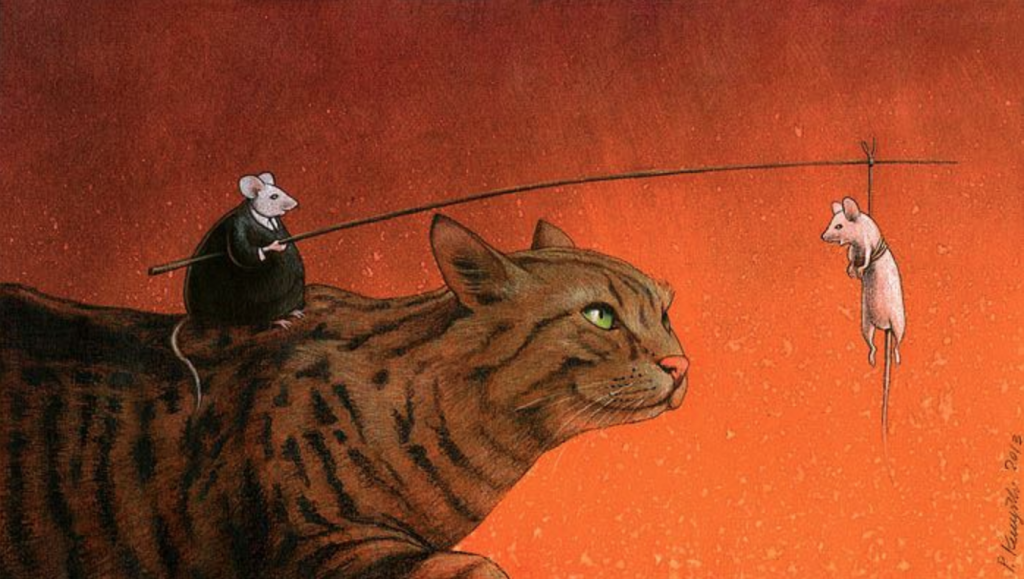
This painting perfectly communicates the idea Schiller was getting at in On the Aesthetic Education of Man. The cat attacking the mouse appears to be a common occurrence. However, there is also a well-fed and well-dressed mouse sitting on top of the cat, dangling the other mouse in front of the cat’s face. Replacing the animals with people, the real monster appears to be the mouse who sacrificed the other one, not the cat itself, which is expected to attack the prey that’s being dangled in front of it. Without any words, we can see the artist’s communication of the idea that in order to get ahead, people would sacrifice others that they have a lot in common with, because they care only about themselves.
This merges the sensual, how we visually see the cat and the two mice, and the intellectual, how we perceive all of them in relation to one another. The fact that this image makes us feel disgust toward the happy mouse sacrificing the other one molds our conscience: we are more conscious of our own actions and not using others, to their detriment, for our benefit. We realize that cooperation and kindness are most important, not being on the top at the expense of others. The artist intends to make us reflect on our actions and this in itself makes us better morally.
